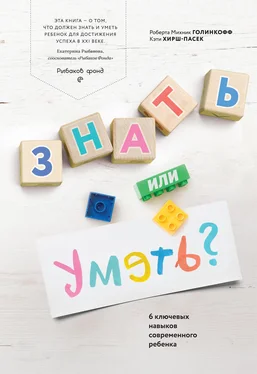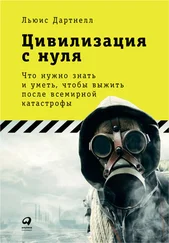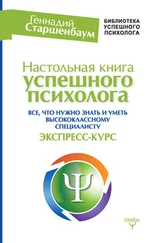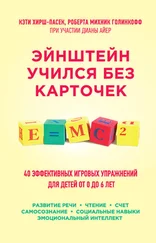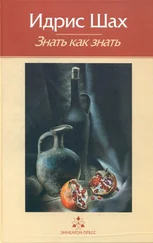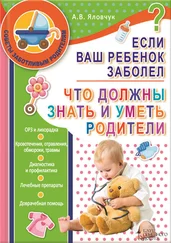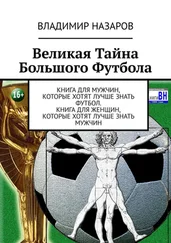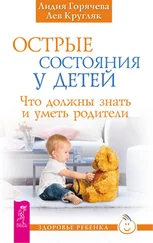Piaget, J. (1952). The origins of intelligence in children (M. Cook, Trans.). Madison, CT: International Universities Press.
Mills, C.M. (2013). Knowing when to doubt: Developing a critical stance when learning from others. Developmental Psychology, 49, 404–418. dx.doi.org/10.1037/a0029500.
Ma, L., & Ganea, P.A. (2009). Dealing with conflicting information: Young children’s reliance on what they see versus what they told. Developmental Science, 13, 151–160. dx.doi.org/10.1111/j.1467–7687.2009.00878.x.
Mills, C.M. (2013). Knowing when to doubt: Developing a critical stance when learning from others. Developmental Psychology, 49, 404–418. dx.doi.org/10.1037/a0029500.
Mills, C.M. (2013). Knowing when to doubt: Developing a critical stance when learning from others. Developmental Psychology, 49, 40–418. dx.doi.org/10.1037/a0029500, с. 413.
Brooks, X. (2 июня 2013). Michael Douglas on Liberace, Cannes, cancer and cunnilingus. The Guardian. См. здесь: www.theguardian.com/film/2013/jun/02/michael-douglas-liberace-cancer-cunnilingus.
Centers for Disease Control and Prevention. (2015). Vaccines do not cause autism. См. здесь: www.cdc.gov/vaccinesafety/concerns/autism/, абзац 7.
Allday, R. (7 марта 2015). Failure to vaccinate led to California’s measles outbreak. San Francisco Chronicle. См. здесь: www.sfchronicle.com/bayarea/article/Failure-to-vaccinate-fueled-state-s-measles-6121401.php, абзац 9.
Kuhn, D., Weinstock, M. (2002). What is epistemological thinking and why does it matter? In B. Hofer & P. Pintrich (Eds.), Epistemology: The psychology of beliefs about knowledge and knowing (сс. 121–140). Mahwah, NJ: Erlbaum.
Kuhn, D. (2009). The importance of learning about knowing: Creating a foundation for development of intellectual values. Child Development Perspectives, 3, 112–117. dx.doi.org/10.1111/j.1750–8606.2009.00089.x.
Curtis, L. (2015). Ten takeaway tips for teaching critical thinking. Взято с сайта Killeen Independent School District: www.killeenisd.org/teachers/index.cfm?param1=13542.
Mills, C.M. (2013). Knowing when to doubt: Developing a critical stance when learning from others. Developmental Psychology, 49, 404–418. dx.doi.org/10.1037/a0029500.
Wilson, E.O. (1999). Consilience: The unity of knowledge (Vol. 31). New York, NY: Random House, с. 294.
Pellegrino, J.W., & Hilton, M.L. (Eds.). (2013). Education for life and work: Developing transferable knowledge and skills in the 21st century. Washington, DC: National Academies Press.
Пять типов умов по Гарднеру: дисциплинарный, синтезирующий, креативный, респектологический и этический. По изданию на русском языке: Гарднер Г. Мышление будущего. Пять видов интеллекта, ведущих к успеху в жизни. М.: Альпина Паблишер, 2015.
Gardner, H. (2006). Five minds for the future. Boston, MA: Harvard Business School Press, с. 46.
Tough, P. (2012). How children succeed. New York, NY: Houghton Mifflin, Harcourt.
Gilbert, D.T. (1991). How mental systems believe. American Psychologist, 46, 107–119. dx.doi.org/10.1037/0003–066X.46.2.107, с. 111.
Darling-Hammond, L. (Ed.). (2008). Powerful learning. San Francisco, CA: Wiley.
de Icaza, M.A. (6 ноября 1991). U.S. Students memorize, but don’t understand [Letter to the editor]. The New York Times. См. здесь: www.nytimes.com/1991/11/06/opinion/l-us-students-memorize-but-don-t-understand-740191.html, абзацы 2, 3.
de Icaza, M.A. (6 ноября 1991). U.S. Students memorize, but don’t understand [Letter to the editor]. The New York Times. См. здесь: www.nytimes.com/1991/11/06/opinion/l-us-students-memorize-but-don-t-understand-740191.html, абзац 5.
На этот пример нас натолкнула следующая работа: Paul, R., & Elder, L. (2012). Critical thinking handbook: K–3rd grades. Tomales, CA: Foundation for Critical Thinking Press.
Kuhn, D., & Weinstock, M. (2002). What is epistemological thinking and why does it matter? In B. Hofer & P. Pintrich (Eds.), Epistemology: The psychology of beliefs about knowledge and knowing (сс. 121–140). Mahwah, NJ: Erlbaum, с. 139.
Halpern, D.F. (1998). Teaching critical thinking for transfer across domains: Dispositions, skills, structure training, and metacognitive monitoring. American Psychologist, 53, 449–455. dx.doi.org/10.1037/0003-066X.53.4.449.
Sternberg, R.J., & Grigorenko, E.L. (2007). Teaching for successful intelligence: To increase student learning and achievement. Newbury Park, CA: Corwin Press.
Edersheim, E. H. (2007). The definitive Drucker. New York, NY: McGraw-Hill.
Kantor, J., & Streitfeld, D. (15 августа 2015). Amazon’s bruising, thrilling workplace. The New York Times. См. здесь: www.nytimes.com/2015/08/16/technology/inside-amazon-wrestling-big-ideas-in-a-bruising-workplace.html, абзац 29.
Gardner, H. (2006). Five minds for the future. Boston, MA: Harvard Business School Press, с. 77.
Bronson, P., & Merryman, A. (10 июля 2010). The creativity crisis. Newsweek. См. здесь: www.newsweek.com/creativity-crisis-74665.
Torrance Creative Thinking — Тест Торренса на творческое мышление (разработан психологом Эллисом Торренсом). Первоначально включал простые задания на мышление и навыки решения проблем, оцениваемые по четырем линиям: беглость, гибкость, оригинальность и разработка. Позднее был исправлен и дополнен.
Kim, K.H. (2011). The creativity crisis: The decrease in creative thinking scores on the Torrance Tests of Creative Thinking. Creativity Research Journal, 23, 285–295. dx.doi.org/10.1080/10400419.2011.627805.
Guilford, J.P. (1967). The nature of human intelligence. New York, NY: McGraw-Hill, с. 213.
Робинсон К. Образование против таланта.М.: Манн, Иванов и Фербер, 2012.
Robinson, K. (2011). Out of our minds: Learning to be creative. Oxford, England: Capstone.
Pink, D.H. (2005). A whole new mind: Moving from the information age to the conceptual age. New York, NY: Riverhead Books.
Florida, R. (май 2002). The rise of the creative class. Washington Monthly. См. здесь: www.washingtonmonthly.com/features/2001/0205.florida.html.
Читать дальше
Конец ознакомительного отрывка
Купить книгу
